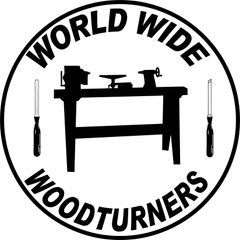Getting Started with Laser Engraving Woodturning is a craft rooted in tradition, but that doesn’t mean it can’t benefit from modern technology. For generations, woodturners have used chisels, gouges, and fine carving tools to add embellishments and details to their work. While these methods produce stunning results, they also require years of practice, steady hands, and significant time investment. That’s where laser engraving steps in—offering woodturners a way to add intricate designs, personal touches, and branding with unmatched accuracy and efficiency.
Laser engraving is a non-contact process that uses a focused beam of light to burn or etch designs into the surface of the wood. This allows for incredible detail, whether it’s a delicate pattern on a bowl’s rim, a professional signature on the base of a piece, or a decorative scene burned into a platter. Unlike traditional carving or pyrography, laser engraving is fast, precise, and highly repeatable, meaning you can achieve the same results time and time again.
Before diving in, it’s essential to understand the core benefits, safety considerations, and workspace requirements that come with laser engraving. Ensuring you have the right setup and knowledge will make your engraving process smoother, safer, and more enjoyable.
Why Use a Laser Engraver?
Laser engraving is quickly becoming a must-have tool for woodturners of all skill levels.
Whether you’re a weekend hobbyist or a full-time professional, the advantages of adding a laser to your workflow are numerous.
- Personalization & Customization: One of the most exciting aspects of laser engraving is the ability to make one-of-a-kind pieces. Adding a signature, logo, or personal message transforms a standard wood-turned object into a meaningful keepsake. Imagine engraving a customer’s name on the bottom of a handcrafted bowl or adding a special message to a gift. The ability to customize each piece enhances its value and appeal.
- Intricate Detail & Fine Engraving: Laser engravers can produce patterns and images that are nearly impossible to create by hand. From delicate floral borders to complex Celtic knots, a laser allows woodturners to incorporate ultra-fine details without the painstaking effort of hand carving. The level of precision makes it easy to replicate designs consistently while maintaining the natural beauty of the wood.
- Efficiency & Repeatability: Traditional carving, inlay, or pyrography can be time-consuming and difficult to replicate perfectly across multiple pieces. Laser engraving eliminates inconsistencies, ensuring that every engraving is exactly the same—whether it’s your logo on the bottom of a bowl or a decorative band around a vase. Additionally, what might take hours to engrave by hand can be done in minutes with a laser.
- Protecting the Integrity of the Wood: One of the greatest advantages of laser engraving is that it’s a non-contact process, meaning there’s no physical pressure applied to the wood. Unlike traditional carving, which involves chisels and gouges that can potentially chip, crack, or weaken the wood’s structure, a laser beam simply burns the surface to create precise markings. This makes laser engraving an excellent choice for delicate, thin-walled turnings or pieces with intricate details that could be damaged by conventional tools.
Heat management is crucial when working with laser engravers. The laser produces intense, concentrated heat to burn the wood surface, and if the power settings are too high or the engraver lingers too long in one spot, it can cause burning beyond the intended engraving depth, leading to:
- Cracking or warping – Some woods, especially softer ones like pine or spalted woods,may expand unevenly due to excessive heat, resulting in splits or warping.
- Charring and excessive burning – While some degree of burning is part of the process, excessive heat can cause deep burns that distort the engraving details.
- Fire hazards – If the laser is set too high or left running in one spot for too long, it can ignite wood fibers, sawdust, or other flammable materials nearby.
To prevent these issues, always:
- Use the correct power and speed settings – Lower power and faster engraving speeds help avoid overheating.
- Monitor engraving depth – A deep burn isn’t always necessary; lighter engravings can still be highly detailed.
- Keep the workspace clean – Remove sawdust and wood shavings from the laser area to reduce fire risk.
- Never leave the laser unattended – If a piece starts to smolder, stop the engraving immediately.
Being mindful of heat levels and engraving settings ensures that your work remains structurally sound, safe, and visually appealing. With the right adjustments, laser engraving enhances your woodturning without damaging the integrity of the piece.
To be continued in Volume 2, Issue 7 …
